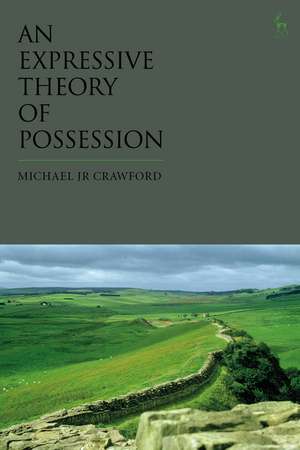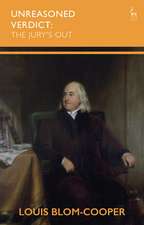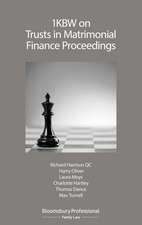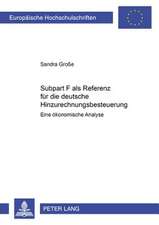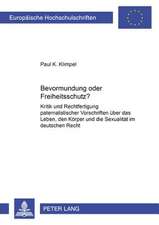An Expressive Theory of Possession
Autor Dr Michael JR Crawforden Limba Engleză Hardback – 8 iul 2020
| Toate formatele și edițiile | Preț | Express |
|---|---|---|
| Paperback (1) | 223.85 lei 6-8 săpt. | |
| Bloomsbury Publishing – 26 ian 2022 | 223.85 lei 6-8 săpt. | |
| Hardback (1) | 510.34 lei 6-8 săpt. | |
| Bloomsbury Publishing – 8 iul 2020 | 510.34 lei 6-8 săpt. |
Preț: 510.34 lei
Preț vechi: 731.17 lei
-30% Nou
Puncte Express: 766
Preț estimativ în valută:
97.66€ • 104.43$ • 81.42£
97.66€ • 104.43$ • 81.42£
Carte tipărită la comandă
Livrare economică 18 aprilie-02 mai
Preluare comenzi: 021 569.72.76
Specificații
ISBN-13: 9781509929924
ISBN-10: 1509929924
Pagini: 232
Dimensiuni: 156 x 234 mm
Greutate: 0.5 kg
Editura: Bloomsbury Publishing
Colecția Hart Publishing
Locul publicării:London, United Kingdom
ISBN-10: 1509929924
Pagini: 232
Dimensiuni: 156 x 234 mm
Greutate: 0.5 kg
Editura: Bloomsbury Publishing
Colecția Hart Publishing
Locul publicării:London, United Kingdom
Caracteristici
Illuminating and refreshing discussion of the legal doctrine of possession
Notă biografică
Michael JR Crawford is Lecturer in Law at the University of New South Wales.
Cuprins
Introduction I. The Possession PuzzleII. Scope of the Book III. Methodological Divergence in Private Law Scholarship IV. Central Arguments V. Chapter Outlines VI. A Note on Nomenclature 1. 'Exclusion' and 'Possession': An Introduction to Property Rights I. Introduction II. What is a 'Thing' and How Do I Get One? III. The Content of a Property Right IV. The Exclusion Model of Property Rights V. The Exclusion Model and Tort VI. Property Limitation Rules VII. Uncoupling 'Property' and 'Possession' VIII. Conclusion 2. Facts, Rights and Other Things: Laying the Conceptual Foundations I. Introduction II. What is Possession? Some Views from the AcademyIII. Playing Word Games: The Language of Possession IV. Jural and Non-Jural Concepts V. Ownership and Relative Title VI. Conclusion 3. An Expressive Theory of Possession I. Introduction II. What Counts as 'Possession'? III. The Expressive Theory of Possession IV. Limiting the Vocabulary of Possession V. Do Courts Apply the Expressive Theory? VI. Conclusion 4. The Possession Convention I. Introduction II. Explanations of the Possession Rule III. David Hume's Theory of Property IV. Conventions V. The Role of Salience in Conventions VI. From Conventions to Norms VII. Conclusion 5. Possession and Fairness I. Introduction II. Hume's Guillotine and Locke's Proviso: Epstein's Partial Defence of the Possession Rule III. Is Possession Fair? IV. The Place of Conventions in the Law V. Conclusion 6. Losing, Finding and the Limits of Possession 2I. Introduction II. The Rules in Outline III. Are these Rules Possessory? IV. Instrumental Justifications V. Are the Rules on Finding Desirable? VI. Navigating the Property Universe VII. Conclusion 7. Theft, Good Faith Purchase and the Limits of Conventions I. Introduction II. Possession and Theft III. Possession and Bona Fide Purchase IV. Conclusion Conclusion
